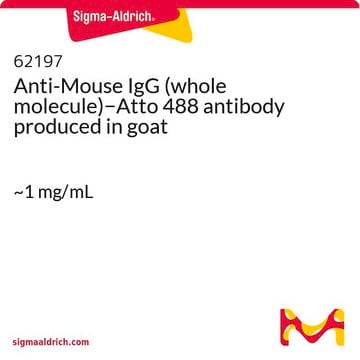38371
Atto 488 Protein Labeling Kit
BioReagent, suitable for fluorescence
About This Item
Productos recomendados
product line
BioReagent
manufacturer/tradename
ATTO-TEC GmbH
fluorescence
λex 488 nm; λem 520 nm in 0.1 M phosphate buffer, pH 7.0 (recommended)
suitability
suitable for fluorescence
storage temp.
2-8°C
¿Está buscando productos similares? Visita Guía de comparación de productos
Categorías relacionadas
General description
Application
Legal Information
Storage Class
10 - Combustible liquids
wgk_germany
WGK 3
flash_point_f
Not applicable
flash_point_c
Not applicable
Certificados de análisis (COA)
Busque Certificados de análisis (COA) introduciendo el número de lote del producto. Los números de lote se encuentran en la etiqueta del producto después de las palabras «Lot» o «Batch»
¿Ya tiene este producto?
Encuentre la documentación para los productos que ha comprado recientemente en la Biblioteca de documentos.
Los clientes también vieron
Artículos
Protein labeling kits with Atto and Tracy dyes provide easy fluorescent labeling of purified proteins, enzymes, and antibodies.
Nuestro equipo de científicos tiene experiencia en todas las áreas de investigación: Ciencias de la vida, Ciencia de los materiales, Síntesis química, Cromatografía, Analítica y muchas otras.
Póngase en contacto con el Servicio técnico




